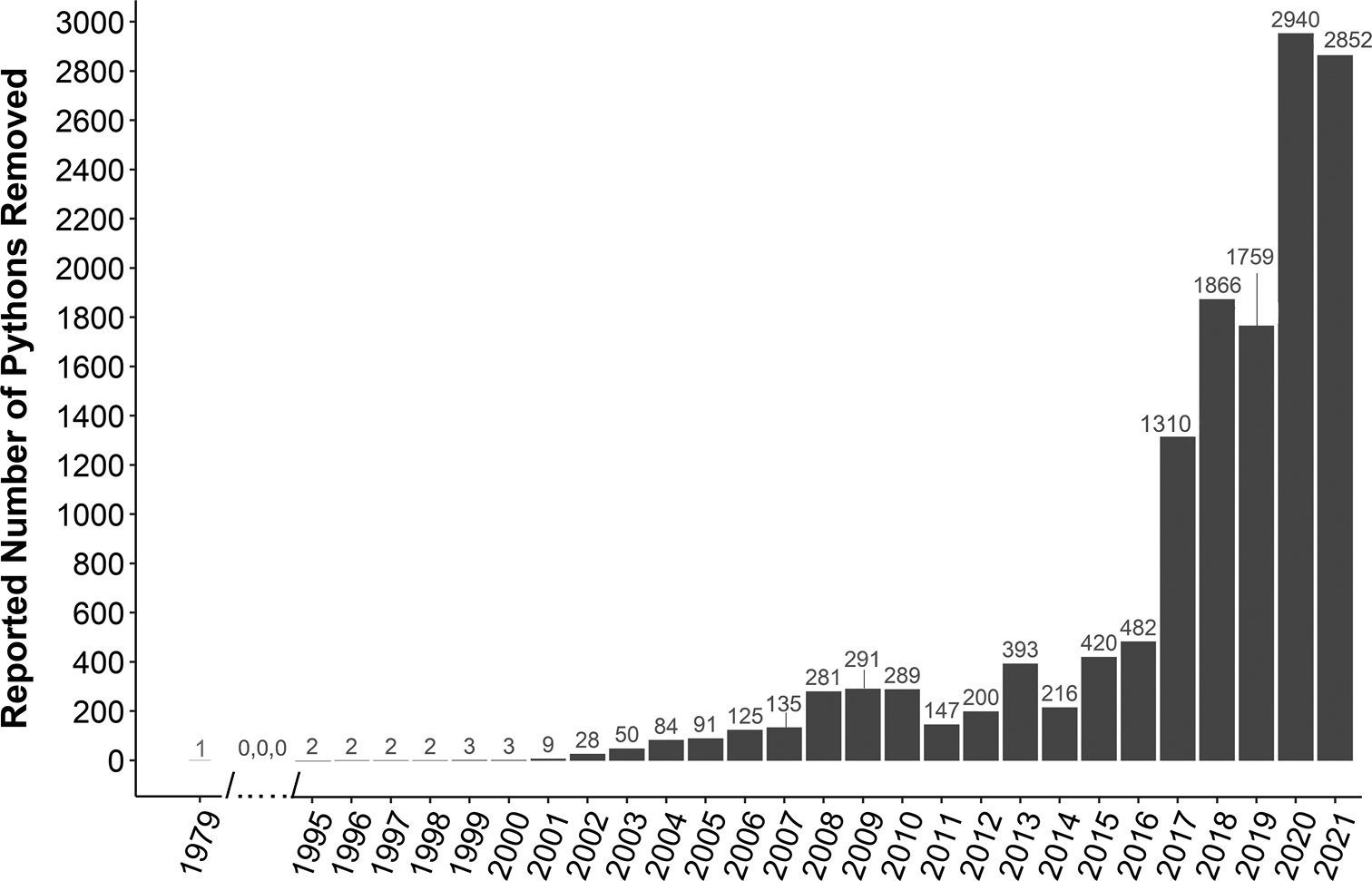
|
||
|
Annual number of reported removals of Burmese pythons (Python molurus bivittatus) across southern Florida through December 31st, 2021 (n=13,746). Data reported to and managed by Florida Fish and Wildlife Conservation Commission (FWC; Suppl. material 2). Pythons are predominantly removed from areas within a kilometer of a road (Fig. 6). Black bars represent the number of pythons removed through several avenues including the Florida Python Challenge, EDDMapS, State and Federal Agencies, and the FWC and South Florida Water Management District (SFWMD) paid Contractor Programs, initiated in 2017. No pythons were recorded from 1980 to 1994, as indicated by the repeating zeros on the x-axis. Overall, interpreting python abundance from unmodelled removal data is complicated by many factors, including detection probability, changes in effort, limited search areas along roads (e.g., Figs 1, 3), and potential variation in factors such as resources, habitat, and environmental conditions. Without careful population-level monitoring with baseline abundance estimates it is difficult to quantify how effective removals are, or whether removals may unintentionally result in an increase in python population abundance (see Challenges Interpreting Removal Data and Removal Programs sections). Future research goals may seek to incorporate methods to generate baseline abundance estimates (see Future Research section). |